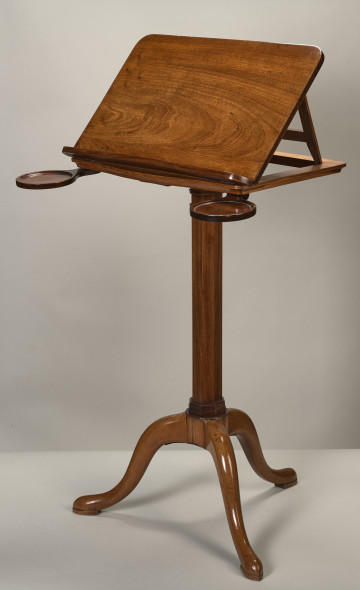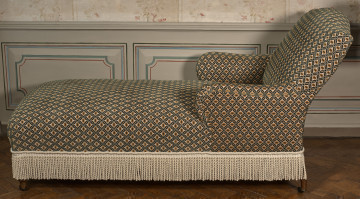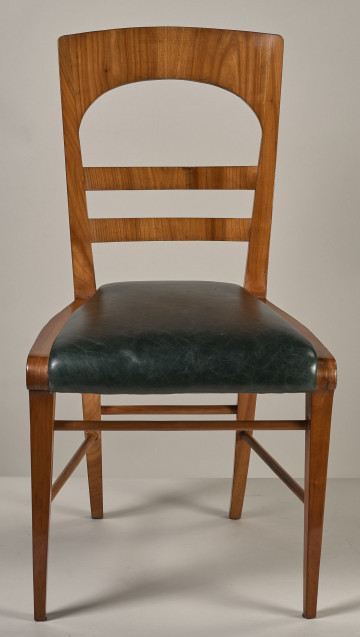
Wooden desktop
18th-19th century
Castle Museum in Łańcut
Part of the collection: Meble i wyposażenie wnętrz
A ‘pear-shaped’ wardrobe The Łańcut Castle has is a wardrobe called ‘pear’ due to its shape in its collection. Its history remains a mystery and information about the piece of furniture is scarce. The wardrobe belonged to the Potocki family collection in Łańcut before the Second World War. Careful examination of the ‘pear’ allows several mysteries to be revealed. The form of the item of furniture points to the developed Baroque era. It is confirmed, among others, by the applied manufacturing technologies and traces of the tools used, for example the profiling of the rounded segments of the wardrobe through wood carving. The pear-shaped form is reminiscent of small architecture: fault lines of streamlined planes, domed finial, decoratively broken and interrupted cornice above the door. The wardrobe consists of two vertically connected identical parts. Pairs of doors placed opposite suggest that the exposed piece of furniture was meant to be viewed from all sides. Its entire outer surface is covered with varnished wooden veneer of Caucasian walnut, a highly valued material in furniture making. The ingenuity of the workmanship surprises even more when the wardrobe is opened. Its interior is divided by a horizontal top. Pairs of doors, sliding on wooden slides, open up two interiors under the top in the shape of symmetrical semicircles. The lower part of the wardrobe could serve as an independent lower piece of furniture with a circular top. Its superstructure is segmented, fastened with brass clasps and closed with an upper pair of opposite doors set so that the individual wings can be easily removed from their brass hinges. The high-class, expensive and magnificent piece of furniture can be easily dismantled and transported. The ingenious design, noble material and craftsmanship indicate that the cabinet was made to individual order. It is not known where and for whom it was created. Some experts indicate that it was a cupboard cabinet, others want to see it as a pipe-room for storing long-barrelled pipes.
Author / creator
Dimensions
height: 246 cm, width: 135 cm
Object type
Furniture and interior fittings
Technique
inlaying
Material
wood
Creation time / dating
Creation / finding place
Owner
Castle Museum in Łańcut
Identification number
Location / status

18th-19th century
Castle Museum in Łańcut

20th century
Castle Museum in Łańcut

19th (?) century
Castle Museum in Łańcut
DISCOVER this TOPIC
National Museum in Szczecin
DISCOVER this PATH
Educational path